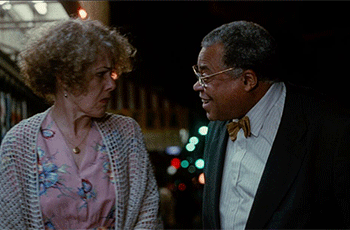
The World Cinema Project (WCP) preserves and restores neglected films from around the world. To date, 64 films from Africa, Asia, Eastern Europe, Central America, South America, and the Middle East have been restored, preserved and exhibited for a global audience. The WCP also supports educational programs, including Restoration Film Schools; intensive, results-oriented workshops allowing students and professionals worldwide to learn the art and science of film restoration and preservation. All WCP titles are available for exhibition rental by clicking "Book This Film."
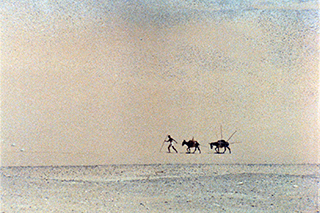
ELOQUENT PEASANT, THE
SHAKAVI EL FLASH EL FASI
Director: Shadi Abdel Salam
WRITTEN BY: Shadi Abdel Salam
EDITING: Kamal Abou El Ella
STARRING: Ahmed Marei (Peasant); Ahmed Enan (The Great Stewart); Ahmed Hegazi (Thutenakht)
COUNTRY OF PRODUCTION: Egypt
LANGUAGE: Arabic
COLOR INFO: Color
RUNNING TIME: 21 minutes
Restored in 2010 by Cineteca di Bologna/L’Immagine Ritrovata laboratory, in association with The Film Foundation’s World Cinema Project, and the Egyptian Film Center. Restoration funded by Armani, Cartier, Qatar Airways and Qatar Museum Authority.
Based on one of the major literary texts survived from the Middle Kingdom, the classical period of Egyptian literature, The Eloquent Peasant is a combination of a morality/folk tale and a poem. The events are set between 2160 and 2025 BC. When the peasant Khun-anup and his donkey stumble upon the lands of the noble Rensi, the peasant’s goods are confiscated and he’s unjustly accused of theft. The peasant petitions Rensi who is so taken by the peasant’s eloquence that he report his astonishing discovery to the king. The king realises the peasant has been wronged but delays judgement so as to he can hear more of his eloquence. The peasant makes a total of nine petitions until finally, his goods are returned.
NOTES ON THE RESTORATION:
The Eloquent Peasant has been restored using the original 35mm camera and sound negatives preserved at the Egyptian Film Center in Giza. The digital restoration produced a new 35 mm internegative. Special thanks to the Bibliotheca Alexandrina.
Image: © Courtesy of Egyptian Film Centre
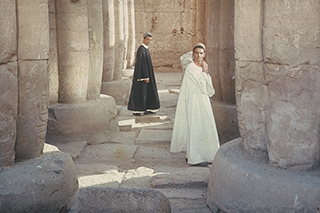
AL MOMIA
NIGHT OF COUNTING THE YEARS, THE
Director: Shadi Abdel Salam
WRITTEN BY: Shadi Abdel Salam
EDITING: Kamal Abou El Ella
DIRECTOR OF PHOTOGRAPHY: Abdel Aziz Fahmi
MUSICAL DIRECTOR: Mario Nascimbene
FROM: Egyptian Film Centre
STARRING: Ahmed Marei (Wannis), Ahmed Hegazi (Brother), Zouzou Hamdi El Hakim (Mother), Nadia Lofti (Zeena)
COUNTRY OF PRODUCTION: Egypt
LANGUAGE: Arabic with French and English subtitles
COLOR INFO: Color
RUNNING TIME: 103 minutes
PRODUCTION COMPANY: Egyptian General Cinema Organization
SET DESIGNER: Salah Marei
Restored in 2009 by Cineteca di Bologna/L’Immagine Ritrovata laboratory, in association with The Film Foundation’s World Cinema Project, and the Egyptian Film Center. Restoration funded by Armani, Cartier, Qatar Airways, Qatar Museum Authority and the Egyptian Ministry of Culture.
Momia, which is commonly and rightfully acknowledged as one of the greatest Egyptian films ever made, is based on a true story: in 1881, precious objects from the Tanite dynasty started turning up for sale, and it was discovered that the Horabat tribe had been secretly raiding the tombs of the Pharaohs in Thebes. A rich theme, and an astonishing piece of cinema. The picture was extremely difficult to see from the 70s onward. I managed to screen a 16mm print which, like all the prints I’ve seen since, had gone magenta. Yet I still found it an entrancing and oddly moving experience, as did many others. I remember that Michael Powell was a great admirer. Momia has an extremely unusual tone – stately, poetic, with a powerful grasp of time and the sadness it carries. The carefully measured pace, the almost ceremonial movement of the camera, the desolate settings, the classical Arabic spoken on the soundtrack, the unsettling score by the great Italian composer Mario Nascimbene – they all work in perfect harmony and contribute to the feeling of fateful inevitability. Past and present, desecration and veneration, the urge to conquer death and the acceptance that we, and all we know, will turn to dust… a seemingly massive theme that the director, Shadi Abdel Salam, somehow manages to address, even emobody with his images. Are we obliged to plunder our heritage and everything our ancestors have held sacred in order to sustain ourselves for the present and the future? What exactly is our debt to the past? The picture has a sense of history like no other, and it’s not at all surprising that Roberto Rossellini agreed to lend his name to the project after reading the script. And in the end, the film is strangely, even hauntingly consoling – the eternal burial, the final understanding of who and what we are… am very excited that Shadi Abdel Salam’s masterpiece has been restored to original splendor.
–Martin Scorsese, May 2009
NOTES ON THE RESTORATION:
The restoration of Al Momia used the original 35mm camera and sound negatives preserved at the Egyptian Film Center in Giza. The digital restoration produced a new 35mm internegative. The film was restored with the support the Egyptian Ministry of Culture.
Image: © Courtesy of Egyptian Film Centre

EIGHT DEADLY SHOTS
KAHDEKSAN SURMANLUOTIA
Director: Mikko Niskanen
WRITTEN BY: Mikko Niskanen
DIRECTOR OF PHOTOGRAPHY: Mikko Niskanen
STARRING: Tarja-Tuulikki Tarsala, Mikko Niskanen, Paavo Pentikäinen, Tauno Paananen. Elina Liimatainen, Ari Vainiontaus, Mauno Argillander, Sulo Hokkanen
COUNTRY OF PRODUCTION: Finland
LANGUAGE: Finnish with English subtitles
COLOR INFO: Black and White
RUNNING TIME: 316 minutes
Restored by The Film Foundation's World Cinema Project, Yleisradio Oy, Fiction Finland ry, and Fondazione Cineteca di Bologna at L'Immagine Ritrovata laboratory. Funding provided by the Hobson/Lucas Family Foundation. Additional support provided by The Ministry of Culture and Education in Finland, Tiina and Antti Herlin Foundation, and the Jane and Aatos Erkko Foundation.
NOTES ON THE RESTORATION:
EIGHT DEADLY SHOTS was originally broadcast in Finland as a 4-part television series by the national public broadcasting company of Finland, YLE. The late film historian and filmmaker Peter von Bagh first discovered and disseminated the work of Mikko Niskanen and was a tireless advocate for this film's restoration. Due to von Bagh's championing, Niskanen is recognized as one of Finland's most revered auteurs.
The digital restoration was completed using a 4K scan of the original 16mm one perforation A/B roll negatives preserved by Yleisradio Oy.
In addition to digital restoration, and in order to be as faithful as possible to the original 16mm look and texture, a new fine grain was created and used to generate a duplicate negative. Finally, two new 35mm prints were struck for circulation and preservation.
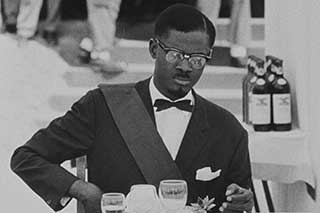
LUMUMBA, DEATH OF A PROPHET
LUMUMBA, LA MORT DU PROPHÈTE
Director: Raoul Peck
WRITTEN BY: Raoul Peck
COUNTRY OF PRODUCTION: France
LANGUAGE: French with English subtitles
COLOR INFO: Color/Black and White
RUNNING TIME: 69 minutes
PRODUCTION COMPANY: Velvet Film
Restored by The Film Foundation’s World Cinema Project and Cineteca di Bologna at L’Immagine Ritrovata/L’Image Retrouvée in collaboration with Velvet Film and supervised by Raoul Peck.
Funding provided by the Hobson/Lucas Family Foundation.
This restoration is part of the African Film Heritage Project, an initiative created by The Film Foundation’s World Cinema Project, the Pan African Federation of Filmmakers and UNESCO – in collaboration with Cineteca di Bologna – to help locate, restore, and disseminate African cinema.
NOTES ON THE RESTORATION:
LUMUMBA, DEATH OF A PROPHET was restored in 4K using the original 16mm camera and sound negatives.

TWO GIRLS ON THE STREET
KÉT LÁNY AZ UTCÁN
Director: André De Toth
WRITTEN BY: Tamás Emod, Rezsö Török
EDITING: Zoltán Kerényi
DIRECTOR OF PHOTOGRAPHY: Károly Vass
ADAPTED BY: André De Toth
PRODUCER: Béla Lévay
FROM: Hungarian National Film Archive
PRODUCTION DESIGN: Gizella Langermann
STARRING: Bella Bordy (Torma Vica), Mária Tasnádi Fekete (Kártély Gyöngyi), Piroska Vaszary Pletyus (as Vaszary Piri), Gyula Csortos (Filc bácsi), Andor Ajtay, Csiszár István, Károly Kovács, Lali
COUNTRY OF PRODUCTION: Hungary
LANGUAGE: Hungarian with French and English subtitles
COLOR INFO: Black and White
RUNNING TIME: 85 minutes
PRODUCTION COMPANY: Hunnia Filmgyár
PRODUCER: Béla Lévay
Restored in 2010 by Cineteca di Bologna/L'Immagine Ritrovata laboratory, in association with The Film Foundation’s World Cinema Project and Magyar Nemzeti Filmarchívum. Restoration funded by Armani, Cartier, Qatar Airways and Qatar Museum Authority.
André De Toth was a great filmmaker, we are indebted to him for a number of extraordinary films (dating back to his first Hungarian works) and many masterpieces. He fought to make ambitious films and refused to work under a studio contract, thus showing a rare desire for freedom […] One day, following a screening of Round Midnight, De Toth told me, “You made me cry. And it’s hard to cry when you only have one eye.” He comforted and supported me. He was never bitter, he would never have said something like: “Cinema was better when I was making films”. He remained curious, open-minded; he battled for the American Cinematheque on Hollywood Boulevard […] “We’re like passengers driving at full speed on the new highways of communication”, he wrote. “It’s the same road since 1895, only it’s slippier because of the sweat and the blood and with more cracks: each of them a broken dream. These past hundred years have been terrible, yet we’ve enjoyed every single minute of them. As long as this fever, this love for making films survives, nothing will ever change.” On his sets, one big sign read, “Drama should occur in front of the camera, not behind it”, another, “Technology will never replace brains and intelligence”.
(Bertrand Tavernier)
NOTES ON THE RESTORATION:
The restoration of Két Lány Az Utcán used the original 35mm camera and sound nitrate negatives preserved at the Magyar Nemzeti Filmarchívum (Hungarian National Film Archive). The digital restoration produced a new 35mm internegative.
Image: © Courtesy of Magyar Nemzeti Filmarchívum (Hungarian National Film Archive)
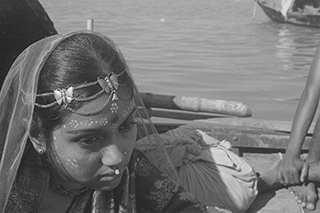
River Called Titas, A
TITAS EKTI NADIR NAAM
Director: Ritwik Ghatak
WRITTEN BY: Advaita Malla Burman, Ritwik Ghatak
EDITING: Basheer Hussain
DIRECTOR OF PHOTOGRAPHY: Baby Islam
PRODUCER: Habibur Rahman Khan
MUSICAL DIRECTOR: Ustad Bahadur Khan
STARRING: Kabari Choudhury (Rajar Jhi), Roushan Jamil (Mother), Probir Mitra (Kishore), Ritwik Ghatak (Tilakchand), Rani Sarkar (Mungli), Sufia Rustam (Udaytara), Rosi Smad (Basanti)
COUNTRY OF PRODUCTION: India
LANGUAGE: Bengali with French/English subtitles
COLOR INFO: Black and White
RUNNING TIME: 158 minutes
ON COMPANY: Ribatan Ghatak/Ritwik Memorial Trust; National Film Archive of India; Bundesarchiv-Filmarchiv
PRODUCER: Habibur Rahman Khan
Restored in 2010 by Cineteca di Bologna /L’Immagine Ritrovata laboratory, in association with Ritwik Memorial Trust, the National Film Archive of India, and The Film Foundation’s World Cinema Project. Additional film elements provided by the Bundesarchiv-Filmarchiv. Restoration funded by Doha Film Institute.
If you were eighteen years old, growing up in New Delhi, a student of cinema, a cinephile or a plain film snob, it was given that you would swoon over the film-maker Ritwik Ghatak and spend endless hours in the Delhi University canteen discussing his films, his alcoholism, and his eventual death from Tuberculosis. An ‘avant garde’ Writer and Director, Ghatak had caught the imagination of many of us who carried Mao’s Red Book’ and quoted liberally from it (in English) at the drop of a hat. After all, didn’t Ghatak (a card carrying Communist) film the extreme poverty and the cultural extinction of Bengal by Imperialism? Because of the political ‘din’ surrounding much of Ghatak’s work, ironically the work itself, as opposed to the man’s personality and politics, got neglected by the legion of his die-hard fans (me included!). It was only years later when I saw his epic, A River Called Titas, that I swooned for totally different reasons. The film is a work of pure genius. A passionate elegy for a dying culture, it moved me profoundly, and continues to haunt me to this day. Based on a novel by the Bengali author Advaita Barman and adapted for the screen by Ghatak, A River Called Titas, tells the raw and powerful story of a dying river and a dying culture.
–Deepa Mehta, May 2010
NOTES ON THE RESTORATION:
The restoration of A River called Titas used the camera and sound negatives and a positive print provided by the Ritwik Memorial Trust and held at the National Film Archive of India. As the original negative is incomplete and some reels were severely damaged, a combined lavender and a positive print provided by the Bundesarchiv-Filmarchiv were also used. The digital restoration produced a new 35 mm internegative.
Image: © Courtesy of Ritaban Ghatak - Ritwik Memorial Trust
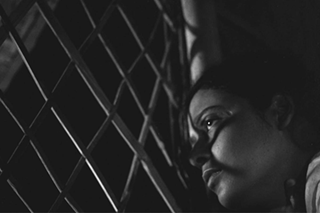
CLOUD-CAPPED STAR, THE
MEGHE DHAKA TARA
Director: Ritwik Ghatak
WRITTEN BY: Ritwik Ghatak
EDITING: Ramesh Joshi
DIRECTOR OF PHOTOGRAPHY: Dinen Gupta
PRODUCER: Ritwik Ghatak
ART DIRECTOR: Ravi Chatterjee
STARRING: Supriya Choudhury, Anil Chatterjee, Bijon Bhattacharya, Gita De, Gita Ghatak, Dwiju Bhawal, Niranjan Roy
COUNTRY OF PRODUCTION: India
LANGUAGE: Bengali
COLOR INFO: Black and White
RUNNING TIME: 127 minutes
PRODUCER: Ritwik Ghatak
Restored by the Criterion Collection in cooperation with The Film Foundation’s World Cinema Project and the Cineteca di Bologna.
NOTES ON THE RESTORATION:
A new digital transfer was created from the 35 mm original camera negative, preserved at the National Film Archive of India in Pune. This element includes several shots inserted from a duplicate negative. A 35 mm print from the Library of Congress was used for sections of the film where the original camera negative was damaged or incomplete.
The original monaural soundtrack was remastered from the Library of Congress’s print and a digital source from the British Film Institute

GHATASHRADDHA
Director: Girish Kasaravalli
WRITTEN BY: Girish Kasaravalli, K.V. Subanna
EDITING: Umesh Kulkarni
DIRECTOR OF PHOTOGRAPHY: S. Ramachandra
STARRING: Narayan Bhatt, Ramaswamy Iyengar, Janganath, Ajith Kumar, Shanta Kumari, Meena Kuttappa, Ramakrishna, Suresh
COUNTRY OF PRODUCTION: India
LANGUAGE: Kannada
COLOR INFO: B&W
RUNNING TIME: 115 minutes
Restored by The Film Foundation’s World Cinema Project and Film Heritage Foundation at L’Immagine Ritrovata laboratory in association with Girish Kasaravalli. Funding provided by the Hobson/Lucas Family Foundation.
NOTES ON THE RESTORATION:
Restored using the 35mm original camera negative preserved at the NFDC-National Film Archive of India and a 35mm print preserved at the Library of Congress.
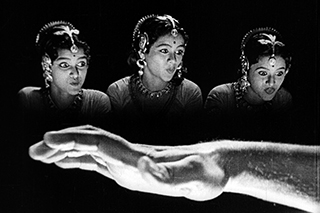
KALPANA
Director: Uday Shankar
WRITTEN BY: Uday Shankar, Amritlal Nagar
EDITING: N.K. Gopal
DIRECTOR OF PHOTOGRAPHY: K. Ramnoth
FROM: National Film Archive of India
STARRING: Uday Shankar (Udayan & Writer), Amala Uday Shankar (Uma), Lakhmt Kanta (Kamini), Dr. G.V. Subbarao (Drawing Master), Brijo Behari Banerji (Uma’s Father)
COUNTRY OF PRODUCTION: India
LANGUAGE: Hindi
COLOR INFO: Black and White
RUNNING TIME: 155 minutes
PRODUCTION COMPANY: Uday Shankar Production
SET DESIGNER: K.R. Sharma
Restored in 2008 by Cineteca di Bologna/L’Immagine Ritrovata, in association with The Film Foundation’s World Cinema Project, the family of Uday Shankar, the National Film Archive of India, and Dungarpur Films. Restoration funded by Doha Film Institute.
A great work of hallucinatory, homemade expressionism and ecstatic beauty, Uday Shankar’s Kalpana (Imagination) is one of the enduring classics of Indian cinema. Shankar, the brother of the great Ravi Shankar, was one of the central figures in the history of Indian dance, fusing Indian classical forms with western techniques. In the late 30s, he established his own dance academy in the Himalayas, whose students included his brother Ravi and future filmmaker Guru Dutt (who worked as an assistant on Kalpana). After the closure of the academy in the early 40s, Shankar started preparations on his one and only film, many years in the making.
Kalpana, with an autobiographical narrative of a dancer who dreams of establishing his own academy (starring Uday Shankar and his wife, the great Amala Shankar – the film also marks the debut of Padmini, who was 17 years old at the time), is one of the few real “dance films” – in other words, a film that doesn’t just include dance sequences, but whose primary physical vocabulary is dance. A commercial failure when it was released, the film is now regarded, justifiably, as a creative peak in the history of independent Indian filmmaking.
NOTES ON THE RESTORATION:
Kalpana has been digitally restored by the World Cinema Foundation at Cineteca di Bologna/L’Immagine Ritrovata laboratory using a combined dupe negative and a positive print held at the National Film Archive of India.
The combined dupe negative was badly damaged and marked by lines, tears, dirt, dust, white marks and poor definition. The restoration required a considerable amount of both physical and digital repair in order to recover the beauty of faces, movements and costumes, and to reduce the aforementioned issues. The original sound was digitally transferred from the combined dupe negative. Digital cleaning and background noise reduction was applied.
The restoration has generated a duplicate negative, new optical soundtrack negative for preservation as well as a complete back-up of all the files produced by the digital restoration.
Image: © Courtesy of National Film Archive of India

KUMMATTY
Director: Aravindan Govindan
WRITTEN BY: Aravindan Govindan
DIRECTOR OF PHOTOGRAPHY: Shaji N. Karun
STARRING: Ramunni, Master Ashokan, Vilasini Reema, Kothara Gopalkrishnan, Sivasankaran Divakaran, Vakkil, Mothassi, Shankar
COUNTRY OF PRODUCTION: India
LANGUAGE: Malayalam with English subtitles
COLOR INFO: Color
RUNNING TIME: 90 minutes
PRODUCTION COMPANY: General Pictures Corporation
Restored by The Film Foundation’s World Cinema Project and Cineteca di Bologna in association with General Pictures Corporation and the Film Heritage Foundation at L’Immagine Ritrovata laboratory.
Funding provided by the Material World Foundation.
NOTES ON THE RESTORATION:
Restored in 4K using the best surviving element: a vintage 35mm print struck from the original camera negative and preserved at the National Film Archive of India. A second 35mm print with English subtitles was used as a reference.
Color grading was supervised by the film’s cinematographer Shaji N. Karun.
Special thanks to Ramu Aravindan.

THAMP
CIRCUS TENT, THE
Director: Aravindan Govindan
WRITTEN BY: Aravindan Govindan
EDITING: A Ramesan
DIRECTOR OF PHOTOGRAPHY: Shaji N. Karun
PRODUCER: K. Ravindranathan Nair
STARRING: Nedumudi Venu, Jalaja, V. K. Sreeraman, Bharath Gopi
COUNTRY OF PRODUCTION: India
LANGUAGE: Malayalam with English subtitles
COLOR INFO: Black and White
RUNNING TIME: 129 minutes
PRODUCER: K. Ravindranathan Nair
Restored by Film Heritage Foundation, The Film Foundation’s World Cinema Project, and Cineteca di Bologna at Prasad Corporation Pvt. Ltd.’s Post - Studios, Chennai, and L’Immagine Ritrovata Laboratory, and in association with General Pictures, National Film Archive of India and the family of Aravindan Govindan. Funding provided by Prasad Corporation Pvt. Ltd. and Film Heritage Foundation.
NOTES ON THE RESTORATION:
THAMP was restored using the best surviving element: a Dupe Negative struck from a 35mm print preserved at the National Film Archive of India.

AFTER THE CURFEW
LEWAT DJAM MALAM
Director: Usmar Ismail
WRITTEN BY: Usmar Ismail, Asrul Sani
EDITING: Sumardjono
DIRECTOR OF PHOTOGRAPHY: Max Tera
MUSICAL DIRECTOR: G.R.W. Sinsu
SOUND: B. Saltzmann
FROM: Sinematek Indonesia
PRODUCTION DESIGN: Persari, Perfini
STARRING: A.N. Alcaff (Iskandar), Netty Herawaty (Norma), R.D. Ismail (Gunawan)
COUNTRY OF PRODUCTION: Indonesia
LANGUAGE: Indonesian
COLOR INFO: Black and White
RUNNING TIME: 101
SET DESIGNER: Abdul Chalid
Restored in 2012 by the National Museum of Singapore and Cineteca di Bologna/L’Immagine Ritrovata laboratory, in association with The Film Foundation’s World Cinema Project, Konfiden Foundation, Kineforum of the Jakarta Arts Council, and the family of Usmar Ismail Estate. Restoration funded by Doha Film Institute.
Lewat Djam Malam (After the Curfew) is a passionate work looking directly at a crucial moment of conflict in Indonesian history: the aftermath of the four-year Republican revolution which brought an end to Dutch rule. This is a visually and dramatically potent film about anger and disillusionment, about the dream of a new society cheapened and misshapen by government repression on the one hand and bourgeois complacency on the other.
The film’s director, Usmar Ismail, is generally considered to be the father of Indonesian cinema, and his entire body of work was directly engaged with ongoing evolution of Indonesian society. He began as a playwright and founder of Maya, a drama collective that began during the years of Japanese occupation. And it was during this period when Ismail developed an interest in filmmaking. He began making films for Andjar Asmara in the late 40s and then started Perfini (Perusahaan Film Nasional Indonesian) in 1950, which he considered his real beginning as a filmmaker. Lewat Djam Malam, a co-production between Perfini and Djamaluddin Malik’s company Persari, was perhaps Ismail’s greatest critical and commercial success.
NOTES ON THE RESTORATION:
Lewat Djam Malam has been digitally restored using the original 35mm camera & sound negatives, interpositive, and positive prints preserved at the Sinematek Indonesia. The original camera negative was scanned at 4K resolution.
The digital restoration began by focusing on fixing instability and flicker followed by the meticulous work of dirt removal, carried out both by automatic tools and by a long manual process of digitally cleaning each image (frame by frame). The film also suffered from signs of mould and vinegar syndrome –the laboratory took great pains to address these problems without damaging the definition of the photographic output, specifically with regards to details and faces.
The original sound was digitally restored using the 35 mm original soundtrack negative. Two reels were missing from the soundtrack negative, and were therefore taken from the combined interpositive. The last 2 minutes of reel 5 were missing from all available elements, but were recovered from a positive copy. The soundtrack has been scanned using laser technology at 2K definition. The core of the digital sound restoration consists on several phases of manual editing, high resolution de-clicker & de-crackle, and multiple layers of fully automated noise reduction.
The restoration was completed at L’immagine Ritrovata laboratory on March 2012.
Image: © Courtesy of the Usmar Estate
